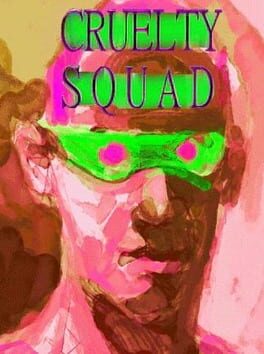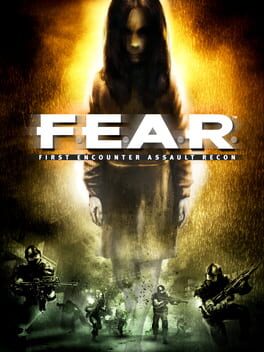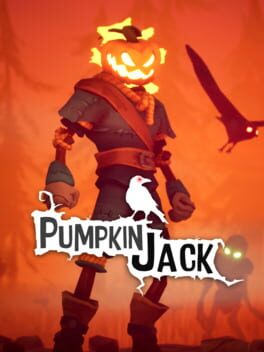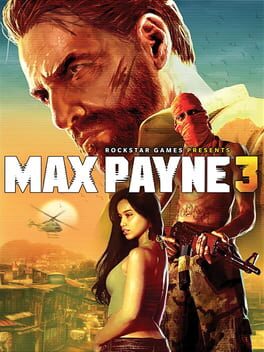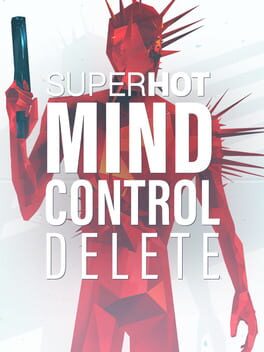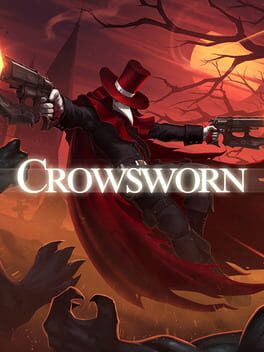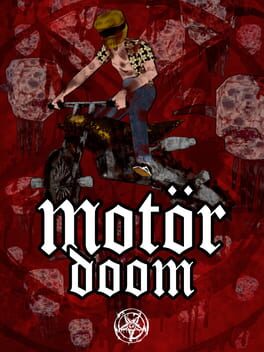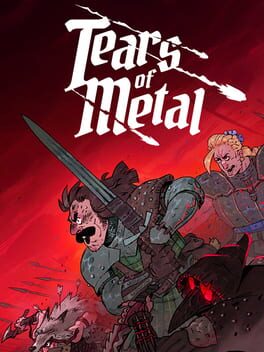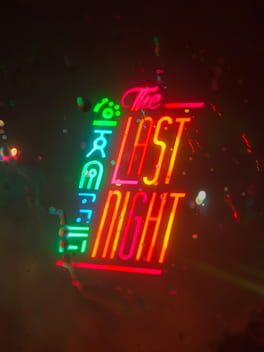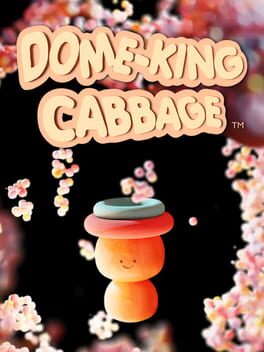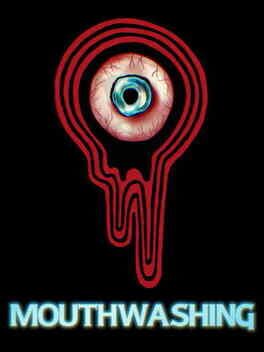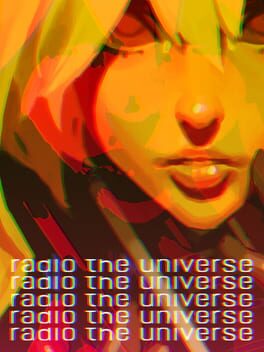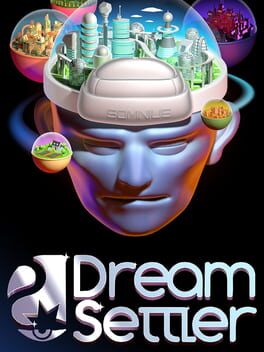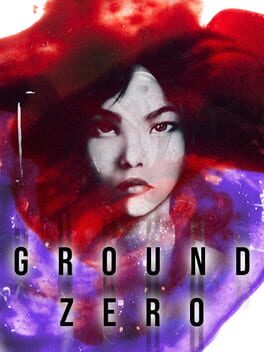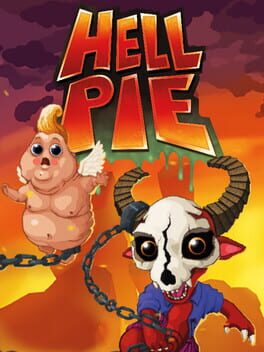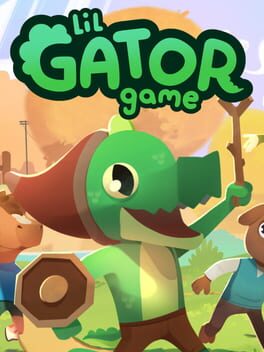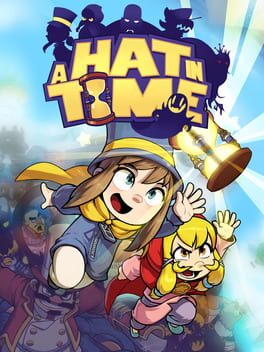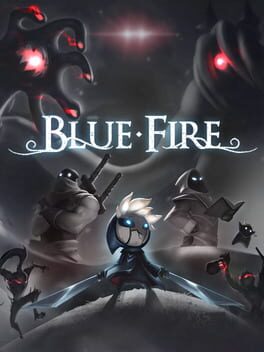Foksorie
6 reviews liked by Foksorie
Cruelty Squad
2021
This is as much of an immersive sim as it is a fishing simulator. You are given a lot of tools to tackle on every mission, but that supposed variety to beat each assignment doesn’t really mean much in that the gun you use and the augmentations you equip only change the path you take, whether it be peacefully or violently, assault or stealth. You are given a fishing rod to, well, fish, but it doesn’t take any more effort other than clicking at the right time when a fish shows up. The point here is that Cruelty Squad isn’t really an immersive sim in that every action I make doesn’t affect the world beyond what happens to me during the mission I’m playing, and since you can get killed in a matter of seconds if you're not careful enough, so there's barely any room for errors. In any other case, this would be a failure, but here it may seem intentional, as life in this world seems to be static and cyclical. There was this one target in Darkworld I think that said something along the lines of: “I was here last time you came and I will be here the next time”. Thing is, nobody really dies in Cruelty Squad. You can get killed as much as you want, but your body will be reconstructed again, and it seems that it is the same for the targets. Everyone is doomed to relieve the same fate over and over, to kill or be killed. As long as it is profitable.
The world is utterly disgusting, the art style is nonsensical for the most part, humans are creepy looking and dogs are mutated beyond belief, and interiors are big yet full of nothing and with a hostile, sometimes maze-like, architecture. Every aspect here works in service of generating the biggest repulsion it can to the player. There's this one moment in the game, in Miner's Miracle, where the camera will switch to the first-person point of view of another person aiming at you with a sniper rifle. They never shoot at you, they're just aiming, like a constant threat. Everyone in this game seems to be in a constant state of paranoia. In Paradise, a seemingly normal neighborhood, most houses (if not every single one) have armed security that will shoot at you even if you're not trying to break in. NPCs talk about how they hate this world to its core and how their fellow coworkers are not trustworthy, and they even ask you to kill them. In the House level, there's an NPC - NPC which, for some reason, has its own name and can be killed forever, probably has something to do with being from the countryside - that not-so-subtly threatens you for being there, and every other NPC in this level will do the same if they’re not shooting at you. Most NPCs will tell you how much they hate their lives, the world and their particular situations, and the ones that try to do something good for the world are the ones you are sent to dispose of. People do not look friendly, even in the Headquarters, when they tell you that they're here for you, you can feel they're not trusty. There's something in their face, in the way they smile… it feels fake.
Everything has this feeling of being fabricated, that everything has lost its meaning. You get killed and your body gets reconstructed to try again. Rinse and repeat. You buy a house in the peaceful countryside to find out it's a murderous energy fueled hellscape that will let nothing in from the outside. People at the disco talk about wanting to game-end themselves. The player character casually watches a mass-shooting in the street during the intro like it's the sort of thing he watches every day. Some augmentations are either not that helpful or their description and effects are so vague you might think they don't even work. The value of a human body is determined by what the market dictates and a human heart can lose all its value in a matter of seconds. Cruelty Squad would be a really simple and not that impressive exercise on nihilism, but the thing that makes it stand out for me is that there seems to be a human heart at the core of it. During the intro you're told the player character has depression, the third ending has this text that starts talking about childhood, broken dreams and hopes being turned into ashes to become just another pawn in the corporate game, and the MC wears a shirt during the whole game that says LIFE. There's all this iconography in reference to LIFE and DEATH, there's a human being who is suffering, who wants all of this to end, who wants to be human once again. This might as well be a modern retelling of RoboCop with a hundred layers more of deranged nihilism. In all of its surrealism, there seems to be a component of reality, the constant agony for the rotten state of the uncaring world and the little value human life holds is very real. There's raw and fictionalized reality all over Cruelty Squad. Despite how unreal everything is, this could perfectly be the world we currently live in.
The world is utterly disgusting, the art style is nonsensical for the most part, humans are creepy looking and dogs are mutated beyond belief, and interiors are big yet full of nothing and with a hostile, sometimes maze-like, architecture. Every aspect here works in service of generating the biggest repulsion it can to the player. There's this one moment in the game, in Miner's Miracle, where the camera will switch to the first-person point of view of another person aiming at you with a sniper rifle. They never shoot at you, they're just aiming, like a constant threat. Everyone in this game seems to be in a constant state of paranoia. In Paradise, a seemingly normal neighborhood, most houses (if not every single one) have armed security that will shoot at you even if you're not trying to break in. NPCs talk about how they hate this world to its core and how their fellow coworkers are not trustworthy, and they even ask you to kill them. In the House level, there's an NPC - NPC which, for some reason, has its own name and can be killed forever, probably has something to do with being from the countryside - that not-so-subtly threatens you for being there, and every other NPC in this level will do the same if they’re not shooting at you. Most NPCs will tell you how much they hate their lives, the world and their particular situations, and the ones that try to do something good for the world are the ones you are sent to dispose of. People do not look friendly, even in the Headquarters, when they tell you that they're here for you, you can feel they're not trusty. There's something in their face, in the way they smile… it feels fake.
Everything has this feeling of being fabricated, that everything has lost its meaning. You get killed and your body gets reconstructed to try again. Rinse and repeat. You buy a house in the peaceful countryside to find out it's a murderous energy fueled hellscape that will let nothing in from the outside. People at the disco talk about wanting to game-end themselves. The player character casually watches a mass-shooting in the street during the intro like it's the sort of thing he watches every day. Some augmentations are either not that helpful or their description and effects are so vague you might think they don't even work. The value of a human body is determined by what the market dictates and a human heart can lose all its value in a matter of seconds. Cruelty Squad would be a really simple and not that impressive exercise on nihilism, but the thing that makes it stand out for me is that there seems to be a human heart at the core of it. During the intro you're told the player character has depression, the third ending has this text that starts talking about childhood, broken dreams and hopes being turned into ashes to become just another pawn in the corporate game, and the MC wears a shirt during the whole game that says LIFE. There's all this iconography in reference to LIFE and DEATH, there's a human being who is suffering, who wants all of this to end, who wants to be human once again. This might as well be a modern retelling of RoboCop with a hundred layers more of deranged nihilism. In all of its surrealism, there seems to be a component of reality, the constant agony for the rotten state of the uncaring world and the little value human life holds is very real. There's raw and fictionalized reality all over Cruelty Squad. Despite how unreal everything is, this could perfectly be the world we currently live in.
This review contains spoilers
Coming from one of the most aggressively average games ever made, I didn't expect this to be much more than an expansion pack disguised as a sequel to give people something before the actual sequel got released. I mean, Pandora Tomorrow is exactly that (it wasn't even made by the same studio that made both Splinter Cell and Chaos Theory), but what I didn't expect is for it to be worse than the previous game.
First off, mechanically it is exactly the same. Yes, it has some new things but those are merely details or gimmicks used for certain situations, but not something meaningful. One good thing I'll say about this one is that it is less restrictive than the previous game. The three alert-limit is still there, but if you don't raise the alarm too continuously it will be reset back to 0, and now with each of the three stages of the limit before it's game over, enemies will start wearing bulletproof vests after the first alert and helmets after the second one. When you reach the third stage it is game over, obviously. And while this is a much better approach than last time, not only half of the levels are still “trip the alarm once and it's game over”, but also I find it really stupid how after having spotted the bodies of various of their comrades, they still decide to reset the alert level to 0 like nothing happened.
I don't know how, but they fucked up the enemy AI. For some reason, if you kill someone, regardless if you killed it in the shadows or under the light, if there's another enemy around, he will know where the body is and go there to raise the alert level, or they will even spot the body from afar anyways, who cares. These time they are way too sensitive to anything you do. If you knock-out someone in the shadows they'll STILL notice it if it's somewhere near, even if there's a wall in-between. In the original Splinter Cell, the enemy AI could be exploited in some ways that made them look stupid, but it worked since it was a really, really straightforward and linear experience. Don't get me wrong, it's still straightforward and linear, it's just that now they've gotten smarter. They also used to move erratically and unpredictably when you alerted them, which is something more notorious this time around. The whistle button is, probably, the only useful addition this game has is necessary to walk past certain enemies, and will come in handy for these moments, and they happen very often, so now you'll need to become best friends with the whistle button, and if you don't you'll get many, many game over screens.
It still has a lot of gimmicky set-pieces (although maybe less than in the previous game), and it still has a lot of trial and error. Especially this last one. It has a fuck-ton of trial and error. More and more annoying than before. Since enemy AI is smarter, now you'll need to make millimetrical movements and follow the script without failing just once if you don't want to get noticed. This wouldn't be so problematic if enemies didn't drain all your health and effectively kill you so goddamn fast, but they do, and when the alarm goes off, soldiers will come from out of nowhere to kill you. This got to a point of annoyance where I dreaded about the simple thought of inserting the game disc. I didn't want to play this.
All this makes an already bad game an even worse one, but what is significantly worse is the story. The story in the first Splinter Cell was so ridiculously basic, uninspired and generic that I wasn't paying much attention to whatever super-serious crimes were being committed by super-serious terrorists with super-serious plans. It was cheesy more times than anything, but it did get me interested enough to finish it. This made the patriotic propaganda more bearable. But this time the story is bad, it's really bad, and the propaganda levels are off the charts. If we decide to look at this as a simple story, putting the propaganda aside, it is bad. No character has any personality or development, the conflict is poorly told and extremely overdone, the enemy leaders are so cartoonishly evil that it's ridiculous. Nothing about it works. But then, there's the propaganda. Every character is constantly reminding you that you're working for THE GOOD GUYS™ while the other factions are THE BAD GUYS™. Obviously, what THE BAD GUYS™ want is to destroy the free world, end democracy and kill a lot of innocent people in the way. Of course that's what they want! That's what real life leaders against American interventionism have always wanted! To kill people! Mindless murderers! How barbaric those third world leaders are, and how great are we, Americans who fight for the freedom of the world! I think I might need to rethink the ratings I gave to all those COD games. I know this isn’t strange considering the Tom Clancy label plastered on the title, but like, it's so blatantly morally corrupt that it becomes genuinely disgusting. It's black or white, no greyscale, no good intentions, no nuance, no nothing, they're just bad because bad.
After the main conflict starts with the takeover of the American embassy in Indonesia by generic third world revolutionary leader in protest of having an American military base in their country (something I also happen to have here where I live, relatively close to my home in fact, and I wish was gone), it is revealed they have stolen smallpox from a cryogenic lab in France to threaten the US with releasing it and then you go to Israel and get betrayed by the Israeli Secret Service and the you go to Indonesia to do a bunch of stuff and then you capture the bad guy and in the last level you kill the other bad guy in an extremely anticlimactic shootout where he dies unceremoniously despite planting a virus-bomb in the L.A. Airport. There, I summarized the 10-hours plot. It is as generic as it sounds. Everything is so anticlimactic that it feels like they forgot what was even the point of all this halfway through and just gave up. I didn't connect to anything I was presented to the point where I really, really did not care about whatever happened to any of these characters or if the entire world blew up.
One of the worst things that can happen to any narrative in general, is having yourself in the situation where you actively think to yourself “I do not care about whatever happens to these people” while playing. And that's the feeling I had during the entire game. I just wanted it to be over. Nothing about it engaged me. It is miserable as a game. It is miserable as a story. And still, someone will compare it to Metal Gear just because it's a stealth game and there's a guy in a sneaking suit or whatever superfluous details. But this is indeed the perfect Metal Gear-like for all the people who entirely missed the point of Metal Gear.
First off, mechanically it is exactly the same. Yes, it has some new things but those are merely details or gimmicks used for certain situations, but not something meaningful. One good thing I'll say about this one is that it is less restrictive than the previous game. The three alert-limit is still there, but if you don't raise the alarm too continuously it will be reset back to 0, and now with each of the three stages of the limit before it's game over, enemies will start wearing bulletproof vests after the first alert and helmets after the second one. When you reach the third stage it is game over, obviously. And while this is a much better approach than last time, not only half of the levels are still “trip the alarm once and it's game over”, but also I find it really stupid how after having spotted the bodies of various of their comrades, they still decide to reset the alert level to 0 like nothing happened.
I don't know how, but they fucked up the enemy AI. For some reason, if you kill someone, regardless if you killed it in the shadows or under the light, if there's another enemy around, he will know where the body is and go there to raise the alert level, or they will even spot the body from afar anyways, who cares. These time they are way too sensitive to anything you do. If you knock-out someone in the shadows they'll STILL notice it if it's somewhere near, even if there's a wall in-between. In the original Splinter Cell, the enemy AI could be exploited in some ways that made them look stupid, but it worked since it was a really, really straightforward and linear experience. Don't get me wrong, it's still straightforward and linear, it's just that now they've gotten smarter. They also used to move erratically and unpredictably when you alerted them, which is something more notorious this time around. The whistle button is, probably, the only useful addition this game has is necessary to walk past certain enemies, and will come in handy for these moments, and they happen very often, so now you'll need to become best friends with the whistle button, and if you don't you'll get many, many game over screens.
It still has a lot of gimmicky set-pieces (although maybe less than in the previous game), and it still has a lot of trial and error. Especially this last one. It has a fuck-ton of trial and error. More and more annoying than before. Since enemy AI is smarter, now you'll need to make millimetrical movements and follow the script without failing just once if you don't want to get noticed. This wouldn't be so problematic if enemies didn't drain all your health and effectively kill you so goddamn fast, but they do, and when the alarm goes off, soldiers will come from out of nowhere to kill you. This got to a point of annoyance where I dreaded about the simple thought of inserting the game disc. I didn't want to play this.
All this makes an already bad game an even worse one, but what is significantly worse is the story. The story in the first Splinter Cell was so ridiculously basic, uninspired and generic that I wasn't paying much attention to whatever super-serious crimes were being committed by super-serious terrorists with super-serious plans. It was cheesy more times than anything, but it did get me interested enough to finish it. This made the patriotic propaganda more bearable. But this time the story is bad, it's really bad, and the propaganda levels are off the charts. If we decide to look at this as a simple story, putting the propaganda aside, it is bad. No character has any personality or development, the conflict is poorly told and extremely overdone, the enemy leaders are so cartoonishly evil that it's ridiculous. Nothing about it works. But then, there's the propaganda. Every character is constantly reminding you that you're working for THE GOOD GUYS™ while the other factions are THE BAD GUYS™. Obviously, what THE BAD GUYS™ want is to destroy the free world, end democracy and kill a lot of innocent people in the way. Of course that's what they want! That's what real life leaders against American interventionism have always wanted! To kill people! Mindless murderers! How barbaric those third world leaders are, and how great are we, Americans who fight for the freedom of the world! I think I might need to rethink the ratings I gave to all those COD games. I know this isn’t strange considering the Tom Clancy label plastered on the title, but like, it's so blatantly morally corrupt that it becomes genuinely disgusting. It's black or white, no greyscale, no good intentions, no nuance, no nothing, they're just bad because bad.
After the main conflict starts with the takeover of the American embassy in Indonesia by generic third world revolutionary leader in protest of having an American military base in their country (something I also happen to have here where I live, relatively close to my home in fact, and I wish was gone), it is revealed they have stolen smallpox from a cryogenic lab in France to threaten the US with releasing it and then you go to Israel and get betrayed by the Israeli Secret Service and the you go to Indonesia to do a bunch of stuff and then you capture the bad guy and in the last level you kill the other bad guy in an extremely anticlimactic shootout where he dies unceremoniously despite planting a virus-bomb in the L.A. Airport. There, I summarized the 10-hours plot. It is as generic as it sounds. Everything is so anticlimactic that it feels like they forgot what was even the point of all this halfway through and just gave up. I didn't connect to anything I was presented to the point where I really, really did not care about whatever happened to any of these characters or if the entire world blew up.
One of the worst things that can happen to any narrative in general, is having yourself in the situation where you actively think to yourself “I do not care about whatever happens to these people” while playing. And that's the feeling I had during the entire game. I just wanted it to be over. Nothing about it engaged me. It is miserable as a game. It is miserable as a story. And still, someone will compare it to Metal Gear just because it's a stealth game and there's a guy in a sneaking suit or whatever superfluous details. But this is indeed the perfect Metal Gear-like for all the people who entirely missed the point of Metal Gear.
F.E.A.R.
2005
I've heard someone describe this game as "if Matrix and John Woo films had a baby with The Ring and Ju-on". I personally would describe this as supernatural Die Hard on crack, and I cannot stress enough how true these statements are. This is the most badass action movie made videogame ever, in the best way possible. But I won’t lie, this game isn’t scary. It sometimes feels like a cheap TV movie from the late 90s. The scares (if you can even call them that) are so constant and repetitious that it never scared me, in fact, I missed some of them because I sometimes moved past scripts I didn’t even noticed, so if you’re looking for something scary, there’s nothing to be scared of here, just a few unexpected moments but nothing more. The contrast in lightning is extremely exaggerated to create a more creepy atmosphere but fails due to it being an action game first, a horror game later. And the flashlight doesn’t help either, since it loses power with time (lasting between 10 and 20 seconds) and it needs to be deactivated for it to recharge. Something similar to Half-Life 2 but more annoying, since this game is full of shadows and dark places, you can’t see nothing without the flashlight. Which, may I add, obliterates the spectacle of dynamic lights and cool effects. I would look past this if it was somehow scary, but as I already said, it isn’t.
BUT, in exchange you get one of the most refined action spectacles possible. Every gunfight is spectacular in its own way. The sandbox the combat offers, while not the most profound and elaborate one, has enough stuff to keep the combat engaging: grenades, mines, shotguns, laser weapons, explosive barrels, karate kicks, bullet time, you name it. Even the enemy soldiers apply actual combat tactics and strategize to kill the player, taking covers, flanking the player, suppressive fire and throwing grenades while you're on cover among other tricks, and their radio chatter is the cherry on top to make them feel threatening. Every single element comes together in consonance to turn, what would be a boring shootout in any other game, into a unique moment. The level design adds a lot too. Full of nooks and crannies for the player to navigate, flank the enemies and approach the situation in different ways. BUT the game throws a stupid amount of enemies at you, sometimes you can’t predict the encounters and cross a door to find three or so soldiers behind a cover that spot you on the moment, sometimes you’ll cross a hallway with the flashlight on and the enemies will go “I see a flashlight!” without being able to predict this. some other times the game will put you in very clear combat arenas where the fight cannot be approached from any angle. And the use of the bullet time mode that emphasizes direct action make the enemies less of a threat in the end and more like an obstacle to get through. What I’m getting to is: this game births and dies in its combat system, which is sustained only by its spectacle and player expression. This game is one of those who put player agency over scripts that take the control from the player and cutscenes (which are a just a handful), which is something that unfortunately has been showing up and improved upon less and less in shoothers since then, advocating for a more movie-like approach (you know, mash X to do this, press Y to do that, hold the walking button while a glorified cutscene plays out). It might sound stupid, but I don’t see many shooters released after F.E.A.R. with stuff like meleeing wood planks or running away from an incoming vehicle that aren't scripts with little to no room for the player to fail. But unfortunately, these details don’t save the game and it sadly peaks in the Armacham offices and it’s downhill from there onwards, concluding with a really lame last third. And even if the story was somewhat interesting or anything, but no, it’s a mixture of horror and action movies clichés, with a plot twist at the end (I think it was a plot twist?) so uninspired and unnecessary it could have been cut off the game and it wouldn’t have made much difference. Ending off with a cliffhanger to continue the meh story in the sequels. Maybe I'm being too negative, but I like it a lot when it works, which isn't most of the time.
BUT, in exchange you get one of the most refined action spectacles possible. Every gunfight is spectacular in its own way. The sandbox the combat offers, while not the most profound and elaborate one, has enough stuff to keep the combat engaging: grenades, mines, shotguns, laser weapons, explosive barrels, karate kicks, bullet time, you name it. Even the enemy soldiers apply actual combat tactics and strategize to kill the player, taking covers, flanking the player, suppressive fire and throwing grenades while you're on cover among other tricks, and their radio chatter is the cherry on top to make them feel threatening. Every single element comes together in consonance to turn, what would be a boring shootout in any other game, into a unique moment. The level design adds a lot too. Full of nooks and crannies for the player to navigate, flank the enemies and approach the situation in different ways. BUT the game throws a stupid amount of enemies at you, sometimes you can’t predict the encounters and cross a door to find three or so soldiers behind a cover that spot you on the moment, sometimes you’ll cross a hallway with the flashlight on and the enemies will go “I see a flashlight!” without being able to predict this. some other times the game will put you in very clear combat arenas where the fight cannot be approached from any angle. And the use of the bullet time mode that emphasizes direct action make the enemies less of a threat in the end and more like an obstacle to get through. What I’m getting to is: this game births and dies in its combat system, which is sustained only by its spectacle and player expression. This game is one of those who put player agency over scripts that take the control from the player and cutscenes (which are a just a handful), which is something that unfortunately has been showing up and improved upon less and less in shoothers since then, advocating for a more movie-like approach (you know, mash X to do this, press Y to do that, hold the walking button while a glorified cutscene plays out). It might sound stupid, but I don’t see many shooters released after F.E.A.R. with stuff like meleeing wood planks or running away from an incoming vehicle that aren't scripts with little to no room for the player to fail. But unfortunately, these details don’t save the game and it sadly peaks in the Armacham offices and it’s downhill from there onwards, concluding with a really lame last third. And even if the story was somewhat interesting or anything, but no, it’s a mixture of horror and action movies clichés, with a plot twist at the end (I think it was a plot twist?) so uninspired and unnecessary it could have been cut off the game and it wouldn’t have made much difference. Ending off with a cliffhanger to continue the meh story in the sequels. Maybe I'm being too negative, but I like it a lot when it works, which isn't most of the time.
Pumpkin Jack
2020
Well, if it isn't saucy Jack.
It's Spooky Month, the best month of the year which I can recommend you play this game because any other month would be why would you do that this is a Halloween game what are you doing? The one thing I can't recommend is getting it at its full price of $30 which is way too much for it. At $18 it'd be a great deal but the price isn't the game itself I'm going off topic here. I got it on the Humble Bundle so I made out okay.
As far as the visuals go, the game looks really good! The artstyle is perfect, and the cutscenes between levels and their illustrations, as well as the character illustrations really fit that cartoony Halloween vibe. The levels will also sometimes become disorienting by moving the camera around in certain situations which really works in the game's favor and adds feelings of tension when it's used. Visually, the game excells.
The music relies on the typical Thermin=Spooky thing and the soundtrack isn't knocking any socks off but has a few good ones like the final boss theme and first boss theme. The voice acting in the between level cutscenes is really good, and I wish Jack had one of two fully voiced lines rather than just the HUP HUH when he jumps. The story is straightforward which is fine when writing isn't the main attraction. Humor is mostly passable but when you have to resort to "it's a plot contrivance just do it" you kinda lose me.
The main attraction on display is the Gameplay, which is also where the game kinda falls apart. It's one of those action games where you don't gain anything from doing the action beyond sometimes an optional collectable, so if you can avoid it you're better off just doing that. The weapons you get at the end of each level do change up the combat, but once you find a certain weapon you're probably not gonna bother with the ones you get after it since that one can just be spammed. You'll know which one it is when you start using it.
The platforming end is just okay as well. You have a double jump but you can't do any cool tricks, not really worth talking about. You can't change direction after a jump outside of using your double jump so keep that in mind. What is worth talking about is the level gimmicks that bring some variety to the game, which each level has usually two that get used twice in it, which some work and some don't except they're fairly long each time, so if you didn't like pushing carts the first time oh boy I hope you're ready for it again! There are also sections where Jack removes his head for a puzzle, but I wish it had its own platforming levels because the head's movement speed plus its downwards momentum when attacking it in the air are far funner to move around as than normal Jack. Unfortunately it's just used for Memory or Simon Says or pick the right shape and is a low part of the game.
This game is serviceable exclusively as a small Halloween treat (if you can get it for cheap). Otherwise the game can be more of a trick than a treat. Happy 26 days till Halloween!
It's Spooky Month, the best month of the year which I can recommend you play this game because any other month would be why would you do that this is a Halloween game what are you doing? The one thing I can't recommend is getting it at its full price of $30 which is way too much for it. At $18 it'd be a great deal but the price isn't the game itself I'm going off topic here. I got it on the Humble Bundle so I made out okay.
As far as the visuals go, the game looks really good! The artstyle is perfect, and the cutscenes between levels and their illustrations, as well as the character illustrations really fit that cartoony Halloween vibe. The levels will also sometimes become disorienting by moving the camera around in certain situations which really works in the game's favor and adds feelings of tension when it's used. Visually, the game excells.
The music relies on the typical Thermin=Spooky thing and the soundtrack isn't knocking any socks off but has a few good ones like the final boss theme and first boss theme. The voice acting in the between level cutscenes is really good, and I wish Jack had one of two fully voiced lines rather than just the HUP HUH when he jumps. The story is straightforward which is fine when writing isn't the main attraction. Humor is mostly passable but when you have to resort to "it's a plot contrivance just do it" you kinda lose me.
The main attraction on display is the Gameplay, which is also where the game kinda falls apart. It's one of those action games where you don't gain anything from doing the action beyond sometimes an optional collectable, so if you can avoid it you're better off just doing that. The weapons you get at the end of each level do change up the combat, but once you find a certain weapon you're probably not gonna bother with the ones you get after it since that one can just be spammed. You'll know which one it is when you start using it.
The platforming end is just okay as well. You have a double jump but you can't do any cool tricks, not really worth talking about. You can't change direction after a jump outside of using your double jump so keep that in mind. What is worth talking about is the level gimmicks that bring some variety to the game, which each level has usually two that get used twice in it, which some work and some don't except they're fairly long each time, so if you didn't like pushing carts the first time oh boy I hope you're ready for it again! There are also sections where Jack removes his head for a puzzle, but I wish it had its own platforming levels because the head's movement speed plus its downwards momentum when attacking it in the air are far funner to move around as than normal Jack. Unfortunately it's just used for Memory or Simon Says or pick the right shape and is a low part of the game.
This game is serviceable exclusively as a small Halloween treat (if you can get it for cheap). Otherwise the game can be more of a trick than a treat. Happy 26 days till Halloween!
Max Payne 3
2012
I decided to replay Max Payne 3 again. I hadn't played it in over a year and in the span of 4th of July, 2021 and 11th of July, 2022, I replayed it approximately four times already. Now, for the (probably) fifth replay, I decided to play it with a controller on PC, the reason is that the mouse was stuttering (it was wireless). This might be a little bit weird given this is a game that requires a lot of precision aiming but it felt surprisingly great! It was still pretty hard to aim, and I probably died more times than I would have if I were playing with keyboard and mouse, but it did come with some aim assist, though I barely noticed it. Everything else remained intact, and I would even dare to say that the experience gets a bit better with the controller, as everything is mapped to easy to remember buttons, I don't have to stretch my finger across the keyboard to do something and everything feels more natural.
Anyways, now to the actual game. You might have heard this if you're slightly interested in playing Max Payne 3, and that is that the gunplay is phenomenal. And my god is that true. You're required to have fast reflexes to act as fast as possible and have the skill to do headshots while running or jumping, whether or not in slowmo. And this might be the best gunplay I've had the pleasure to enjoy in all of the games I've played. It is really satisfying chaining headshots while jumping straight to the enemies. Probably the most polished and perfected gunplay in recent years. Small details like shooting someone in the leg and see them fall onto a river or off a building are what make this a pleasure to both play and see, and I believe it is what makes me come back time after time. I also heard some people complain about how you can only have 2 or 3 weapons in the inventory, but I don't see that as a failed mechanic. It forces the player to keep switching weapons and ditching the ones no longer useful, so you'll have the chance to use most, if not all, the weapons available in the game. Pistols, revolvers, rifles, SMGs, shotguns, LMGs, all that stuff. In Max Payne 1 you got to carry every weapon you found, and while it was a more limited arsenal, the three different shotguns were basically: shotgun, better shotgun and better-er shotgun, and as all three of them used the same ammo, there was no point on using the shotgun instead of the better-er shotgun (to be fair, the gameplay emphasized switching weapons constantly, so if you emptied the mag of one shotgun, you could switch to another instead of reloading, which takes less time), but here as the game progresses you'll have a wide range of different weapons to choose from. And if that doesn't convince you, go ahead and tell me it ain't cool to empty a shotgun, drop it, switch to akimbo 1911s, dive into the air and blow three heads off in slowmo. If you say this isn't cool you're not real.
But there's one drawback I find to the gameplay. See, Max Payne 3 is victim to what I like to call the 7th gen third person cover shooter craze, a time where every third person shooter needed to be based on covers. In Max Payne 1, slowmo diving was essential because you couldn't just press a button to hide behind a cover, there was a need to keep on the move while in combat that kept it flowing, when Max falls onto the ground he instantly gets back up, he can't stay down on the ground. Whether it was the product of limitations or a genuine game design choice, it added a lot of flow to the combat as if you were to just stand or lay there shooting you were going to get killed in a matter of seconds. There's this phrase commonly associated with Half-Life that says: "Run. Think. Shoot. Live.", but I think it also works for Max Payne as Max was being hunted down by almost everyone and needed to make quick and risky decisions to stay alive, a feeling that transported great to the gameplay. Here, getting back up from the floor takes its time so it's recommended to keep laying down until there's a chance to recover. This is perfectly ok, but if this happens on open areas, way far from any cover or surrounded by enemies, there's a big chance of getting killed in a matter of seconds. So there's a need to find covers to hide on and be careful. The gunplay is telling me to go crazy and dive anywhere, but at the same time, that might get me killed so better find a cover to shoot safely from. To quote Max himself: "You live in two worlds, eventually you're gonna get your life ripped apart".
While writing this I've been debating on if I'm judging it properly by itself or if the ghost of the original Max Payne makes me criticize this game harsher than I would if it was its own thing, but the thing is, this is its own thing. Not only gameplay-wise but also in reference to the tone, narrative and well, basically everything. This game's elements stand out from the previous two games because it's nothing like those two. I've tackled on gameplay, but in terms of story, Max Payne 3 is the most serious one out of the trilogy. The original Max Payne had its dramatic moments sure, but if the game wanted it would throw some wacky character that looked and acted like if it came out of a B-Movie Crime Drama. It would even let you sit down and watch entire episodes of the fictional TV Cartoon Show, frickin' Captain BaseBall Bat Boy. The end result was a rather goofy action game that took itself serious only in the moments necessary. Max Payne 2 did try to be more serious, but it still had its fair share of wacky situations and levels like Noir City. I think even Captain BaseBall Bat Boy himself even appeared at one point. Max Payne 3 is not only serious, but also super gritty, dark, more depressing and more cruel and disturbing, depicting conflict basically anywhere with a lot of gruesome and nasty stuff as well as a really well made gore system. All of this in a game where the main character always fails to achieve its goals. Besides the change in tone, which is actually fine (and even more in line with Max's personality), the actual problem is that this is not a continuation and it doesn't even acknowledges anything from the previous games. Everything that happened in Max Payne 1 and 2 is either omitted or referenced in an optional collectible. The only thing this game has of Max Payne is the titular character. If you come to think of it, Max Payne 3 is a pretty elaborate fanfiction made by people that actually know how to write.
But these aren't the biggest problems this game has. The biggest problem Max Payne 3 has, is being an extremely cinematic experience, one that almost feels on rails. This game is riddled with cutscenes, turret/on-rails sections and heavily scripted segments. Around 2022, I saw a video of a guy talking about how this game had more cutscenes than game and then proceeded to calculate how much time in the game he spent playing and how much time he spent watching cutscenes. The end result was cutscenes over gameplay. While I won't go to such lengths, I will admit that, at least, it felt like that. A cutscene, then a shootout. A cutscene, then a shootout. A cutscene, then a shootout. It's always like this. Thankfully the cutscenes are well directed and composed and have rhythm, but it IS tedious to get interrupted by a cutscene in less than 3 minutes over 6 times (and 6 being generous) per chapter. Sometimes, after a cutscene, instead of another shootout there will be an on-rails turret section or a glorified cutscene where you click on enemy's heads or keep pressing W while a script plays out. This is what actually kills the flow, giving the player time to relax goes against the feeling of urgency the narrative tries to push. The superb gunplay does overshadow this problem, but the game insists on repeating this structure of shootout-cutscene-shootout-cutscene, and it does get tiring when getting closer to the ending. It even takes the liberty to put some quick-time events at some points, because after all, this is still a 7th gen third person cover shooter. A really polished, memorable and fun one, sure, but it comes at the cost of feeling radically different from what a Max Payne game used to be just to follow popular AAA trends at the time.
Anyways, thanks for sticking this long, Max Payne 1 is a game I'm enthusiastic about and one I really, really, really like. Max Payne 3 is a game I still have a soft spot for in my heart even with all the critiques I can have. I guess you see more flaws on the things you like, or that's what I've heard.
Anyways, now to the actual game. You might have heard this if you're slightly interested in playing Max Payne 3, and that is that the gunplay is phenomenal. And my god is that true. You're required to have fast reflexes to act as fast as possible and have the skill to do headshots while running or jumping, whether or not in slowmo. And this might be the best gunplay I've had the pleasure to enjoy in all of the games I've played. It is really satisfying chaining headshots while jumping straight to the enemies. Probably the most polished and perfected gunplay in recent years. Small details like shooting someone in the leg and see them fall onto a river or off a building are what make this a pleasure to both play and see, and I believe it is what makes me come back time after time. I also heard some people complain about how you can only have 2 or 3 weapons in the inventory, but I don't see that as a failed mechanic. It forces the player to keep switching weapons and ditching the ones no longer useful, so you'll have the chance to use most, if not all, the weapons available in the game. Pistols, revolvers, rifles, SMGs, shotguns, LMGs, all that stuff. In Max Payne 1 you got to carry every weapon you found, and while it was a more limited arsenal, the three different shotguns were basically: shotgun, better shotgun and better-er shotgun, and as all three of them used the same ammo, there was no point on using the shotgun instead of the better-er shotgun (to be fair, the gameplay emphasized switching weapons constantly, so if you emptied the mag of one shotgun, you could switch to another instead of reloading, which takes less time), but here as the game progresses you'll have a wide range of different weapons to choose from. And if that doesn't convince you, go ahead and tell me it ain't cool to empty a shotgun, drop it, switch to akimbo 1911s, dive into the air and blow three heads off in slowmo. If you say this isn't cool you're not real.
But there's one drawback I find to the gameplay. See, Max Payne 3 is victim to what I like to call the 7th gen third person cover shooter craze, a time where every third person shooter needed to be based on covers. In Max Payne 1, slowmo diving was essential because you couldn't just press a button to hide behind a cover, there was a need to keep on the move while in combat that kept it flowing, when Max falls onto the ground he instantly gets back up, he can't stay down on the ground. Whether it was the product of limitations or a genuine game design choice, it added a lot of flow to the combat as if you were to just stand or lay there shooting you were going to get killed in a matter of seconds. There's this phrase commonly associated with Half-Life that says: "Run. Think. Shoot. Live.", but I think it also works for Max Payne as Max was being hunted down by almost everyone and needed to make quick and risky decisions to stay alive, a feeling that transported great to the gameplay. Here, getting back up from the floor takes its time so it's recommended to keep laying down until there's a chance to recover. This is perfectly ok, but if this happens on open areas, way far from any cover or surrounded by enemies, there's a big chance of getting killed in a matter of seconds. So there's a need to find covers to hide on and be careful. The gunplay is telling me to go crazy and dive anywhere, but at the same time, that might get me killed so better find a cover to shoot safely from. To quote Max himself: "You live in two worlds, eventually you're gonna get your life ripped apart".
While writing this I've been debating on if I'm judging it properly by itself or if the ghost of the original Max Payne makes me criticize this game harsher than I would if it was its own thing, but the thing is, this is its own thing. Not only gameplay-wise but also in reference to the tone, narrative and well, basically everything. This game's elements stand out from the previous two games because it's nothing like those two. I've tackled on gameplay, but in terms of story, Max Payne 3 is the most serious one out of the trilogy. The original Max Payne had its dramatic moments sure, but if the game wanted it would throw some wacky character that looked and acted like if it came out of a B-Movie Crime Drama. It would even let you sit down and watch entire episodes of the fictional TV Cartoon Show, frickin' Captain BaseBall Bat Boy. The end result was a rather goofy action game that took itself serious only in the moments necessary. Max Payne 2 did try to be more serious, but it still had its fair share of wacky situations and levels like Noir City. I think even Captain BaseBall Bat Boy himself even appeared at one point. Max Payne 3 is not only serious, but also super gritty, dark, more depressing and more cruel and disturbing, depicting conflict basically anywhere with a lot of gruesome and nasty stuff as well as a really well made gore system. All of this in a game where the main character always fails to achieve its goals. Besides the change in tone, which is actually fine (and even more in line with Max's personality), the actual problem is that this is not a continuation and it doesn't even acknowledges anything from the previous games. Everything that happened in Max Payne 1 and 2 is either omitted or referenced in an optional collectible. The only thing this game has of Max Payne is the titular character. If you come to think of it, Max Payne 3 is a pretty elaborate fanfiction made by people that actually know how to write.
But these aren't the biggest problems this game has. The biggest problem Max Payne 3 has, is being an extremely cinematic experience, one that almost feels on rails. This game is riddled with cutscenes, turret/on-rails sections and heavily scripted segments. Around 2022, I saw a video of a guy talking about how this game had more cutscenes than game and then proceeded to calculate how much time in the game he spent playing and how much time he spent watching cutscenes. The end result was cutscenes over gameplay. While I won't go to such lengths, I will admit that, at least, it felt like that. A cutscene, then a shootout. A cutscene, then a shootout. A cutscene, then a shootout. It's always like this. Thankfully the cutscenes are well directed and composed and have rhythm, but it IS tedious to get interrupted by a cutscene in less than 3 minutes over 6 times (and 6 being generous) per chapter. Sometimes, after a cutscene, instead of another shootout there will be an on-rails turret section or a glorified cutscene where you click on enemy's heads or keep pressing W while a script plays out. This is what actually kills the flow, giving the player time to relax goes against the feeling of urgency the narrative tries to push. The superb gunplay does overshadow this problem, but the game insists on repeating this structure of shootout-cutscene-shootout-cutscene, and it does get tiring when getting closer to the ending. It even takes the liberty to put some quick-time events at some points, because after all, this is still a 7th gen third person cover shooter. A really polished, memorable and fun one, sure, but it comes at the cost of feeling radically different from what a Max Payne game used to be just to follow popular AAA trends at the time.
Anyways, thanks for sticking this long, Max Payne 1 is a game I'm enthusiastic about and one I really, really, really like. Max Payne 3 is a game I still have a soft spot for in my heart even with all the critiques I can have. I guess you see more flaws on the things you like, or that's what I've heard.
I'm writing this as the unskippable 2.5 hours after-credits wait is still going, and I must start this review stating that this is the most horrendous way of finishing a game. That being said, the overall experience of SuperHot: Mind Control Delete was pretty great, I'd even say it's superior than the first entry (and it sure is better than VR by a mile). At a first glance it's pretty similar to the first SuperHot, and while some elements are brought back, the weapons, abilities and enemies, each one of these elements are massively expanded and improved upon.
The first thing that needs to be addressed is the difference between Mind Control Delete and the original SuperHot. The first SuperHot was a self-contained and linear game whose gameplay revolved around memorization, much like Hotline Miami. You'll be dropped onto a level and then do your best or die trying, and if you die you'll restart the same level and replay it until you eventually eliminate every enemy successfully, so it was more about trial and error, especially towards the final levels. Mind Control Delete is a game about improvisation. Sure, the levels repeat over and over, and some are brought back from the first game, and you'll eventually get used to their layout, but that's about it, everything else is randomized, even the player's spawnpoint. The levels are gathered in a randomized collection, so if you die on one level, the collection changes and it starts all over again. I know this sounds boring and frustrating as hell, but since everything is random it turns out different each time you play.
But it doesn't end there. In every collection of levels, after completing a certain amount that can vary, there will be an also randomized hack to choose from. Hacks are special abilities that the player can obtain by completing certain level collections. These hacks are then unlocked to be selectable during any set of levels. This adds a lot of replayability since if you die you'll start empty handed so the hacks you get to choose from are different for each collection of levels, and as you go on, there'll be more to select from. And whenever you get to select them, two random different hacks show up for you to select one of them. There will never be one that's clearly better than the other so you discard one of them entirely, your selection depends on your context. For example, if you're low on hearts (yeah, you can take a few hits before dying, which is a great addition), choosing a health regaining hack might be a better option than bullet ricochet, or maybe you're doing great and want to try otherwise. The options are almost limitless, it's about choosing wisely which ones to use, because some can be pretty helpful while others can be relatively useless. It turns out to be more strategic than the first game.
Another thing Mind Control Delete expands upon is the enemy variety. There are still your common red guys that work the same, but now there are these red guys with spikes that blow up releasing a lot of bullets into the air that can hit you, so maybe it's better to keep a distance with them. Another new type of enemy is the one that's entirely white except for one limb which remains red and this is the only weak spot they have, so for the rest of the body they're practically unkillable. Tho the biggest and most important enemy addition are the immortal enemies. There are a total of three of these and they appear at random in random levels so you never know when one's gonna show up, and this always keeps the player on edge if they do eventually show up, because they have a similar special ability the player also has (I forgot to mention it, but when you start a collection of levels there are four different permanent abilities to choose from that stay activated until the collection is finished, even if you die), so as everything is randomized, there's a pressure to kill all the enemies the level requires to be finished that gets even more tense when one of these three enemies do show up. This game works with tension better than any of the previous two entries, because this game is about mastering its mechanics instead of repeating a level until you find an optimal way of clearing the level, and it's a blast when you pull it off correctly. All of this game's elements work together masterfully turning the first SuperHot, what was essentially a gameplay experiment and barely anything more, into a more tenseful experience with more strategy and decision making.
[SOME SPOILERS HERE, JUMP TO THE NEXT PARAGRAPH IF YOU DON'T WANT TO SPOIL THE ENDING]
Now for the narrative aspect, it's a certain improvement. Like, the first game had a story, kinda, it was some creepypasta-esque cryptic bs that ended up nowhere and was more of a hindering than anything else. Mind Control Delete is a meta-game on not having a story so it's less bs and, while cryptic, the story isn't much of an obstacle this time. I tried my best to understand it and all I ended up with was that it talks about isolation for damaged individuals (whether physically or mentally) on virtual violence and how it can absorb them entirely. Basically, a story about addiction to/escapism via virtual violence. Remember those immortal enemies? After what is basically a boss battle with each one of them you eliminate both their and your special ability resulting in what I assume is their physical termination, and this is done in segments where you'll see them static looking at you until you get rid of their own ability. It isn't explicitly said, but I think that, as with the original game, you're controlling someone irl killing them. For example, the dog one appears in a hospital room sitting on a wheelchair. Also, while on the menu you can read notes related to these characters which give away hints about how they really are. After this, the game concludes with what I think is game-ending yourself by uninstalling everything (?). I know all of this may sound overanalitical and nonsensical, and that's because it is. And that final 2.5 hours loading screen just to play the game again screams pretentiousness. If not this, all I can think of is that the game criticizes the player for enjoying mindless violence, which I hope isn't what they were going for. Either way there are some aspects of the story that I couldn't understand at all so that was the best I could've come up with. I think it's better to play the game's meta-game of not having a true meaning and just enjoy the experience.
[SPOILERS CONCLUDED]
Overall, this is a major improvement on the first SuperHot. After finishing the VR one I didn't want to play another SuperHot because of the bad impression it gave me, and boy did I miss something great. This game is the definitive SuperHot experience and I don't know why here it has a lower average rating than the previous games. Anyways, if you liked the original SuperHot or the VR one, this is better in every single way, so I ought you to check this one out. Sure the game's core differs a bit from the previous games, but it somehow works surprisingly great and rarely gets tiring with its randomized gameplay.
The first thing that needs to be addressed is the difference between Mind Control Delete and the original SuperHot. The first SuperHot was a self-contained and linear game whose gameplay revolved around memorization, much like Hotline Miami. You'll be dropped onto a level and then do your best or die trying, and if you die you'll restart the same level and replay it until you eventually eliminate every enemy successfully, so it was more about trial and error, especially towards the final levels. Mind Control Delete is a game about improvisation. Sure, the levels repeat over and over, and some are brought back from the first game, and you'll eventually get used to their layout, but that's about it, everything else is randomized, even the player's spawnpoint. The levels are gathered in a randomized collection, so if you die on one level, the collection changes and it starts all over again. I know this sounds boring and frustrating as hell, but since everything is random it turns out different each time you play.
But it doesn't end there. In every collection of levels, after completing a certain amount that can vary, there will be an also randomized hack to choose from. Hacks are special abilities that the player can obtain by completing certain level collections. These hacks are then unlocked to be selectable during any set of levels. This adds a lot of replayability since if you die you'll start empty handed so the hacks you get to choose from are different for each collection of levels, and as you go on, there'll be more to select from. And whenever you get to select them, two random different hacks show up for you to select one of them. There will never be one that's clearly better than the other so you discard one of them entirely, your selection depends on your context. For example, if you're low on hearts (yeah, you can take a few hits before dying, which is a great addition), choosing a health regaining hack might be a better option than bullet ricochet, or maybe you're doing great and want to try otherwise. The options are almost limitless, it's about choosing wisely which ones to use, because some can be pretty helpful while others can be relatively useless. It turns out to be more strategic than the first game.
Another thing Mind Control Delete expands upon is the enemy variety. There are still your common red guys that work the same, but now there are these red guys with spikes that blow up releasing a lot of bullets into the air that can hit you, so maybe it's better to keep a distance with them. Another new type of enemy is the one that's entirely white except for one limb which remains red and this is the only weak spot they have, so for the rest of the body they're practically unkillable. Tho the biggest and most important enemy addition are the immortal enemies. There are a total of three of these and they appear at random in random levels so you never know when one's gonna show up, and this always keeps the player on edge if they do eventually show up, because they have a similar special ability the player also has (I forgot to mention it, but when you start a collection of levels there are four different permanent abilities to choose from that stay activated until the collection is finished, even if you die), so as everything is randomized, there's a pressure to kill all the enemies the level requires to be finished that gets even more tense when one of these three enemies do show up. This game works with tension better than any of the previous two entries, because this game is about mastering its mechanics instead of repeating a level until you find an optimal way of clearing the level, and it's a blast when you pull it off correctly. All of this game's elements work together masterfully turning the first SuperHot, what was essentially a gameplay experiment and barely anything more, into a more tenseful experience with more strategy and decision making.
[SOME SPOILERS HERE, JUMP TO THE NEXT PARAGRAPH IF YOU DON'T WANT TO SPOIL THE ENDING]
Now for the narrative aspect, it's a certain improvement. Like, the first game had a story, kinda, it was some creepypasta-esque cryptic bs that ended up nowhere and was more of a hindering than anything else. Mind Control Delete is a meta-game on not having a story so it's less bs and, while cryptic, the story isn't much of an obstacle this time. I tried my best to understand it and all I ended up with was that it talks about isolation for damaged individuals (whether physically or mentally) on virtual violence and how it can absorb them entirely. Basically, a story about addiction to/escapism via virtual violence. Remember those immortal enemies? After what is basically a boss battle with each one of them you eliminate both their and your special ability resulting in what I assume is their physical termination, and this is done in segments where you'll see them static looking at you until you get rid of their own ability. It isn't explicitly said, but I think that, as with the original game, you're controlling someone irl killing them. For example, the dog one appears in a hospital room sitting on a wheelchair. Also, while on the menu you can read notes related to these characters which give away hints about how they really are. After this, the game concludes with what I think is game-ending yourself by uninstalling everything (?). I know all of this may sound overanalitical and nonsensical, and that's because it is. And that final 2.5 hours loading screen just to play the game again screams pretentiousness. If not this, all I can think of is that the game criticizes the player for enjoying mindless violence, which I hope isn't what they were going for. Either way there are some aspects of the story that I couldn't understand at all so that was the best I could've come up with. I think it's better to play the game's meta-game of not having a true meaning and just enjoy the experience.
[SPOILERS CONCLUDED]
Overall, this is a major improvement on the first SuperHot. After finishing the VR one I didn't want to play another SuperHot because of the bad impression it gave me, and boy did I miss something great. This game is the definitive SuperHot experience and I don't know why here it has a lower average rating than the previous games. Anyways, if you liked the original SuperHot or the VR one, this is better in every single way, so I ought you to check this one out. Sure the game's core differs a bit from the previous games, but it somehow works surprisingly great and rarely gets tiring with its randomized gameplay.
